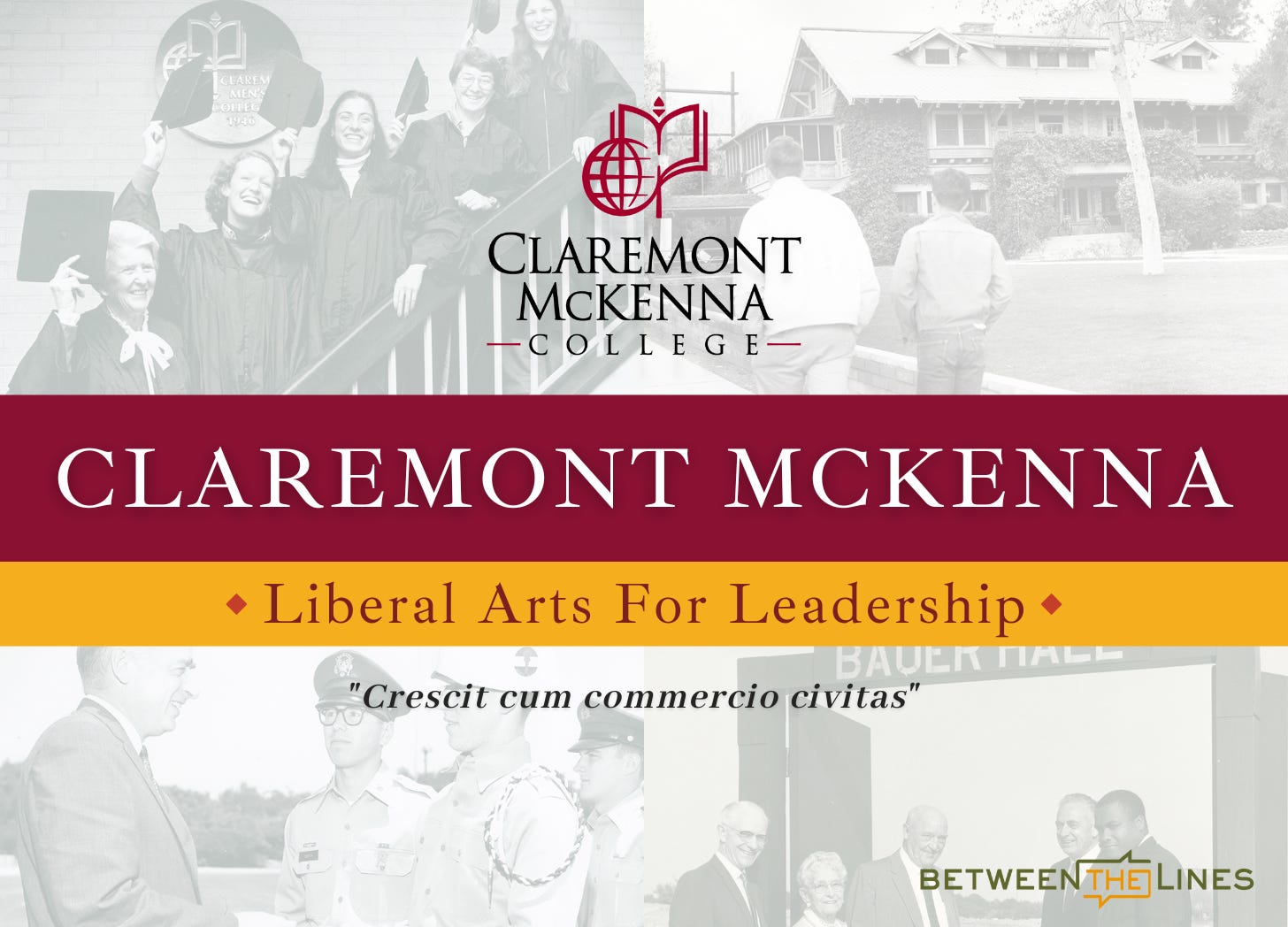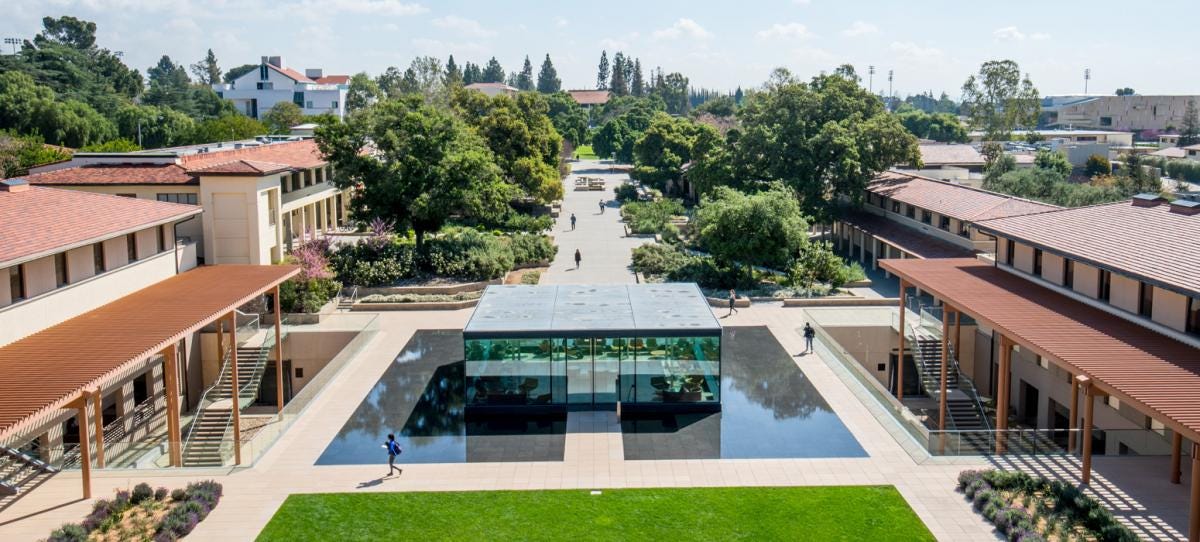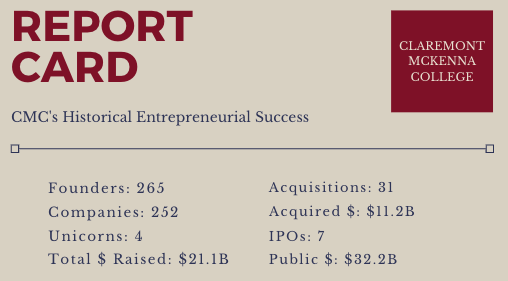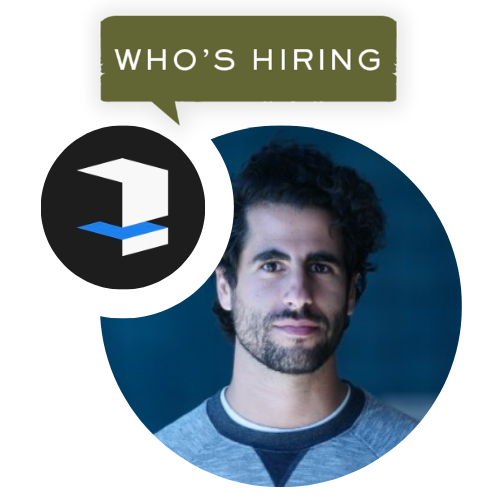✌✌Issue #70: CMC - Liberal Arts For Leadership
The founding story of Claremont McKenna College and its history of producing successful leaders and entrepreneurs in the world
💬 Welcome to issue #70 of Between the Lines
Good morning & happy Thursday. Welcome to part four in our seven-part series on the entrepreneurial history of the Claremont Colleges — Claremont McKenna College. In case you missed them, parts one, two, and three were about the founding stories of Pomona College, Claremont Graduate University, and Scripps College.
Read on to learn more about the founding history of CMC, the G.I. Bill, the professors that helped make it happen, and the myriad of alumni leaders and entrepreneurs who have helped make Claremont McKenna what it is today. It’s a Claremont world out there.
~ Josh & Miles
📊 6th Street Stats: Liberal Arts For Leadership
Authors: Josh Tatum & Miles Bird
In the 1930s, things were busy at Claremont. After being founded in 1926, thanks to a generous donation from Ellen Browning Scripps, Scripps College was well underway and had already graduated its first class of students. The Claremont Colleges was now three members strong, and The Consortium received nationwide recognition for its unique consortium model and the quality of liberal arts education it provided. Even the president of the Carnegie Corporation, one of the most important institutions that advanced education programs globally, praised Claremont’s consortium proposal in the 1930s as “the most significant undertaking in the organization of higher education in this country since the establishment of the state universities.” Claremont was the talk of California and academia.
Journalists spotlighted Claremont with headlines, too:
The academic East is now copying the educational experiments of the progressive West. The world has its eyes on a small group of Southern California colleges already termed the ‘Oxford of the Pacific.’
However, the Consortium as we know it was still far from complete. But the heady days of the 1920s were followed by a mean hangover in the 1930s. The aspiration to quickly bring a new college to fruition after Scripps’ founding fell by the wayside. It was a time of tighter purse strings, and it was unclear how, when, or if a new college would be added to the budding entrepreneurial endeavor in higher education.
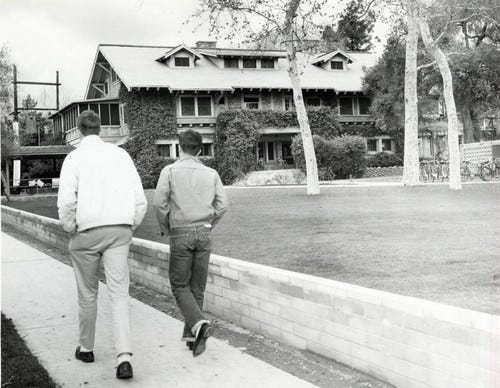
In 1937, however, Russell McCullough Story, a political science professor at Pomona, began a two-year term as president of the Claremont Colleges. Even in the tighter fiscal environment, Story strongly believed that establishing a fourth college was necessary to stabilize the group plan and bring the concept to fruition. Fortunately for all of us at the Claremont Colleges, he was a relentless champion of the full realization of the group colleges’ vision. He pulled from all corners to make it happen.
Twenty years after the official founding of the Claremont Consortium and two years after the announcement of the G.I. Bill, the Consortium added another member. James Blaisdell’s vision, as we’ve written about in the history of Pomona College, inched closer to reality. In 1946, 86 students and seven faculty members formed the fourth installation of the Claremont Colleges — Claremont Men’s College. The college’s first president, George Benson, was a WWII veteran and the grandson of Pomona College’s founding trustee Charles Burt Sumner (talk about a Claremont legacy). 🤯
As a graduate of Pomona College, President Benson and his wife were well-versed with Blaisdell’s vision to become the first-ever college consortium in the U.S., and he wasted no time getting started. Classes at CMC began in the fall of ’46 and had a scrappy start with converting a mansion into a college dormitory and dining room. It was agreed that this first building should be named Story House in honor of the late President of the Claremont Colleges, Russell Story, who had worked tirelessly and, perhaps, even given his life for the realization of the consortium vision.
From the very beginning, the purpose and mission of CMC were crystal clear: “to prepare future leaders of private and public enterprise through a distinctive liberal arts curriculum.” Rather than only focussing on training students in specific industries, the college sought to teach students how to apply all kinds of lessons, emphasizing leadership across all different subject matters and courses. It wanted to prepare students for leadership through a liberal arts background. Liberal arts for leadership was CMC’s original idea, and George and Mabel Benson helped make this a reality as they developed the college’s intellectual framework.
Flash forward to today, and unsurprisingly, with the rise of technology’s influence in both the private and public sectors, the CMC alumni community has become a breeding ground for some of the U.S.’s most impactful entrepreneurs and promising startup founders. Since 2000 alone, over 250 CMC alumni entrepreneurs have started, built, and scaled hundreds of venture-backed startup companies. The pace is accelerating, and most of these businesses have risen within the last decade. The CMC startup ecosystem now averages roughly 30 new companies founded per year. These startups have also collectively raised an eye-popping $21 billion since the turn of the century.
Since its founding, leadership has been the hallmark of CMC, and its graduates continue to shine. CMC has come a long way in its short history — from a one-building, higher education hacker house to the leading liberal arts college it is today.
We’re confident we’re still in the earliest innings for CMC’s entrepreneurial leadership! 👇
💼 Who’s Hiring?:
Claremont alumnus Nicholas Diao & Justin Wenig are co-founders of Coursedog – an integrated academic operations platform. Founded in 2018, Coursedog empowers academic administrators to support on-time completions and operational excellence with integrated academic and event scheduling, course demand projections, curriculum management, and online catalog solutions. Coursedog’s co-founders are Forbes 30 Under 30 Award winners, and the company raised a Series A last year led by First Round Capital and Coatue. They’re hiring for several open positions:
Arye Barnehama is a Claremont alumnus and the former head of design at AR unicorn DAQRI (co-founded by fellow Claremont alumnus Gaia Dempsey). He is now the co-founder and CEO of the robotics startup Elementary Robotics. The robot assistant company is transforming the manufacturing & logistics industry with intelligent automation and visual AI for quality assurance and traceability. Elementary provides easy-to-use software, deep learning AI, and camera systems built to capture visual data and deliver reliable real-time judgments. Elementary raised one of the largest LA startup funding rounds last December and is backed by top-tier VCs, including Tiger Global, Threshold, Toyota, and Riot. He’s hiring for multiple engineering openings:
Check out the other ~5,000 open jobs at 400+ Claremont-affiliated companies here on our Storyboard. Plus, create a profile and enter your preferences to get alerted to new job postings relevant to you, be they the 1,000+ remote jobs, 100+ internships, or 40+ part-time positions available. We’ve published research that shows that Claremont-founded companies that disproportionately hire Claremont talent outperform — so pay attention, Claremonsters!
If any of these roles catch your eye 👀 , apply and mention Between the Lines. Or, if you are an employer looking to hire tip-top Claremont talent, fill out this form to have your jobs featured.
🗣️ Conversations on the Interwebz:
This week’s Claremont exits & acquisitions 💸
Claremont graduate Colleen Krumwiede is the co-founder of Quatromoney – an online college financial planner that enables students and parents to better assess each college's financial fit. This past week, Quatromoney was acquired by fintech company Anovaa to further promote financial literacy and responsible borrowing across key populations.
With connected TV ad spending continuously growing, Samba TV recently announced its acquisition of AI and machine learning company, Disruptel. This acquisition further advances Samba’s ability to quickly identify and analyze additional on-screen content, including brand logos, products, and people. Claremont alumnus Ashwin Navin is the co-founder and CEO.


Can’t get enough of Between the Lines? Follow and connect with us on Twitter!
🍽️ BTL Snacks:
⭐ 5 Stars For Traditional Chinese Medicine….. Claremont alumnus and founder Stephanie Joyce Tan is on a journey to unlock and modernize the benefits of Traditional Chinese Medicine. Her startup company, NOOCI, offers a multi-purpose supplement made with a traditional plant-based formula specifically designed for the high-stress, fast-paced lifestyles of women today. They were recently featured as one of the Best New Brands of 2022 by Thingtesting – an online product review platform by actual buyers working to make online shopping more transparent. Check out the full list.
🔑 The Secure Way Of Activating Identity Data….. Brands have reached a turning point with their first-party information. Many have already put in the hard work to gather internal data, and these brands hope to connect what they’ve collected to the larger ecosystem to activate audience targeting and measurement. Claremont graduate Nancy Marzouk shares insights on ensuring that the data is kept secure through the process and that the outcome is as effective as possible. Nancy is the CEO and Founder of identity solutions company MediaWallah.
Feedback? We love to hear it. Hit us with an email. 👊🏼



